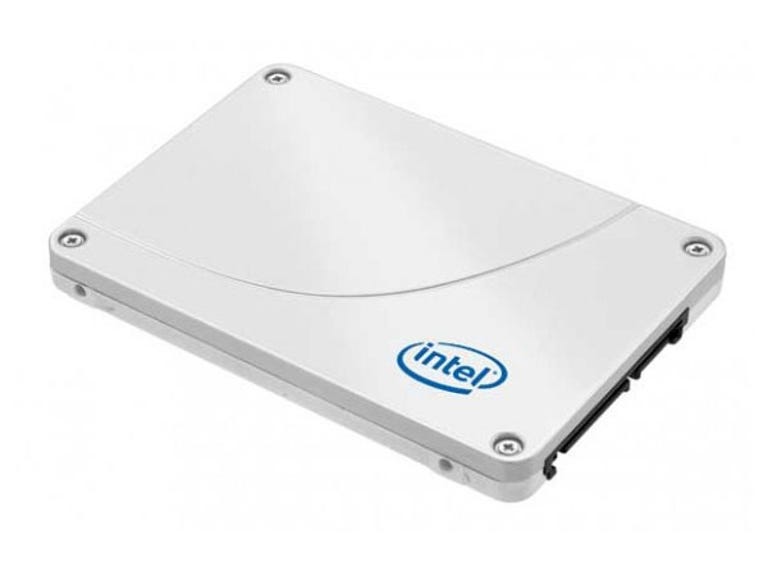 Why You Can Trust CNET
Why You Can Trust CNET Intel SSD 335 Series (240GB) review: Intel SSD 335 Series (240GB)
While there are better performing drives out there, the 335 represents the peace-of-mind choice when buying an SSD.
Intel's 335 Series hasn't changed much since the preceding 330 Series — to the point that opening the drive up reveals the circuit board to be almost identical and still SandForce 2281-based. The secret is hidden in the serial numbers on the NAND itself, with Intel transitioning its memory from 25nm to a 20nm process.
The Good
The Bad
The Bottom Line
Otherwise, things are, at least from a physical standpoint, exactly the same, with only firmware tweaks to provide a difference.
It's sold only as a 240GB capacity at this stage (with 224GB of that being usable), and in kit form — meaning you get a 2.5-inch to 3.5-inch bay adapter, a four pin to SATA power connector, a 6Gbps SATA cable, and a few screws along with the drive itself.
For benchmarking, both CrystalDiskMark and Anvil's Storage Utilities were set to 1GB datasets, using incompressible data.
Choose a benchmark: CrystalDisk read | CrystalDisk write | AS SSD read | AS SSD write | Anvil read | Anvil write
Intel's current drives are SandForce-based, and so throwing incompressible data at them, as we have here, means that they won't hit their advertised highest speeds.
Unfortunately, we can't get a true sense of improvement between the 330 and the 335 with the results above, as we've only had the 120GB version of the 330 in for review. Typically, the performance gulf between 120GB and 240GB is quite noticeable. Still, we do have a 240GB version of the higher-rung 520, and as you can see from the results, the 335 makes a compelling case if you're set on going Intel.
The 335 does have a problem compared to the rest of the market though. At the moment, the 335 is only sold in a 240GB capacity for around AU$215. You can pick up its predecessor in the same capacity for AU$189. Samsung's 830 goes for AU$205, and OCZ's Vertex 4 for AU$219, both offering slightly more storage than Intel and better performance. While Intel maintains a reputation for reliability, its price premium makes it a much harder sell.
With its own new controller hitting enterprise, and SandForce's third generation controller coming next year, it looks like 2013 will be the year that Intel will start really making waves again in the SSD space. Until then, the 335 is the peace-of-mind choice, knowing that you've got the reliability of big daddy Intel behind you.


